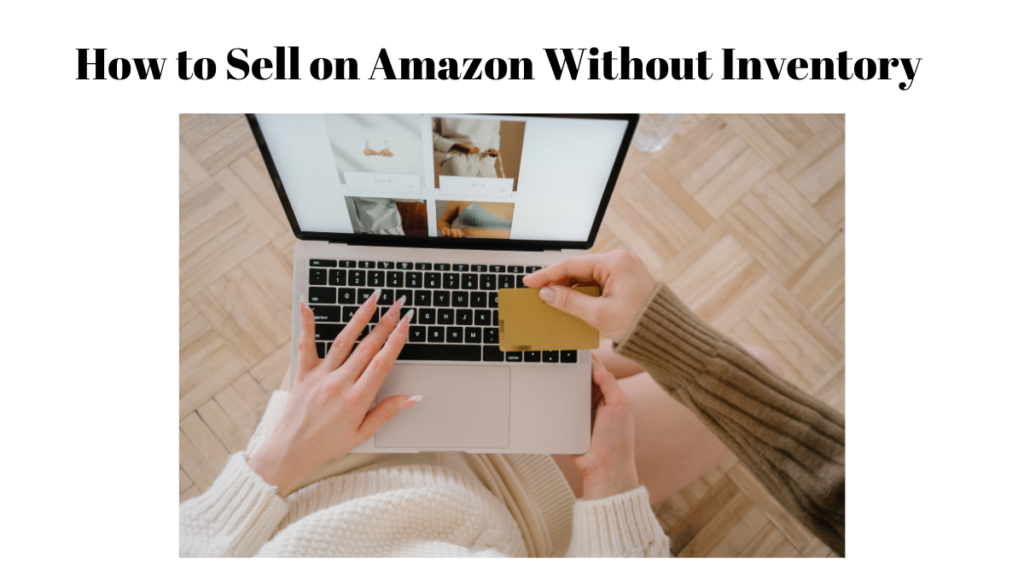If you want to start an online business, selling on Amazon is one of the most popular and profitable options. However, you may be wondering how to sell on Amazon without inventory, or without having to deal with the hassle of storing, packing and shipping your products.
The good news is that there are several ways to sell on Amazon without inventory, and in this blog post, we will show you how. Whether you want to sell your own products, other people’s products, or digital products, there is a method that suits your needs and goals.
Here are the main ways on how to sell on Amazon without inventory:
- Dropshipping
Dropshipping is a business model where you sell products that are fulfilled by a third-party supplier. You do not have to buy or store any inventory, and you only pay for the product when a customer places an order. The supplier then ships the product directly to the customer, and you keep the difference between the selling price and the wholesale price.
Dropshipping has many advantages, like low startup costs, low risk, and high scalability. However, it also has some challenges, like finding reliable suppliers, managing customer service, and competing with other sellers who may offer lower prices or faster shipping.
To start dropshipping on Amazon, you need to find a niche and a product that has high demand and low competition. You also need to find a supplier that offers quality products, fast shipping, and competitive prices. You can use platforms like AliExpress, Spocket, or SaleHoo to find dropshipping suppliers.
Once you have your product and supplier, you need to create a seller account on Amazon and list your product. You need to write a compelling product description, use high-quality images, and optimize your listing for keywords and conversions. You also need to set your price and shipping options.
When a customer orders your product, you need to place the order with your supplier and provide them with the customer’s information. The supplier will then ship the product to the customer and provide you with a tracking number. You need to update the order status on Amazon and communicate with the customer if necessary.
Dropshipping on Amazon can be a lucrative way to sell without inventory, but you need to follow Amazon’s policies and guidelines. For example, you need to disclose that you are a dropshipper in your seller profile, use your own branding on the packaging and invoices, and not use Prime shipping or Fulfilled by Amazon (FBA) services.
- Print on Demand
Print on demand is another way to sell products without inventory. Print on demand is similar to dropshipping, but instead of selling existing products, you sell custom-made products that are printed and shipped by a third-party service provider.
Print on demand allows you to sell products like t-shirts, mugs, posters, books, and more with your own designs or logos. You do not have to worry about inventory, production, or fulfillment. You just need to create your designs, upload them to a print on demand platform, and list them on Amazon.
Some of the most popular print on demand platforms are Merch by Amazon, Printful, Teespring, and Lulu. These platforms integrate with Amazon and handle everything from printing to shipping. You only pay for the cost of the product and the service fee when a customer orders your product. You keep the rest of the profit.
To start selling print on demand products on Amazon, you need to create an account on a print on demand platform and upload your designs. You can use tools like Canva or Photoshop to create your designs. You also need to choose the products you want to sell and set your prices.
Next, you need to create a seller account on Amazon and link it with your print on demand platform. You can then sync your products from the print on demand platform to Amazon and create your listings. You need to write catchy titles, descriptions, and bullet points for your products and use relevant keywords and categories.
When a customer orders your product, the print on demand platform will print it and ship it directly to the customer. You don’t have to do anything except monitor your sales and reviews. You can also promote your products using social media, email marketing, or advertising.
Print on demand is a great way to sell unique and creative products without inventory. However, you also need to consider the quality of your designs, the competition in your niche, and the fees charged by the print on demand platform and Amazon.
- Affiliate Marketing
Affiliate marketing is another way to sell on Amazon without inventory. Affiliate marketing is a form of online marketing where you earn commissions by promoting other people’s or company’s products or services.
Affiliate marketing works by creating content that attracts and educates your target audience about a specific topic or problem. You then recommend relevant products or services that can help them solve their problem or achieve their goals. You include affiliate links in your content that direct your audience to the product or service page on Amazon. When someone clicks on your link and makes a purchase, you earn a commission.
Affiliate marketing has many benefits, like low startup costs, passive income, and unlimited earning potential. However, it also has some challenges, like building trust and authority, creating valuable and engaging content, and driving traffic to your content.
To start affiliate marketing on Amazon, you need to join the Amazon Associates program, which is free and easy to sign up for. You also need to choose a niche and a product category that you are interested in and knowledgeable about. You can use tools like Amazon Best Sellers, Amazon Movers and Shakers, or Amazon Keyword Tool to find profitable and popular products to promote.
Next, you need to create a website or a blog where you will publish your content. You can use platforms like WordPress, Wix, or Squarespace to create your website or blog. You also need to register a domain name and get web hosting for your site.
After that, you need to create content that attracts and educates your audience. You can create content like product reviews, comparisons, tutorials, guides, tips, or case studies. You need to provide honest and helpful information that helps your audience make informed decisions. You also need to include your affiliate links in your content and disclose that you are an affiliate.
Finally, you need to drive traffic to your content. You can use various methods like search engine optimization (SEO), social media marketing, email marketing, or paid advertising to attract visitors to your site. You also need to track and analyze your traffic and conversions using tools like Google Analytics or Amazon Associates Central.
- Kindle Digital Publishing (KDP)
Kindle Digital Publishing (KDP) is Amazon’s e-book publishing platform that allows authors and publishers to publish their books to the Amazon Kindle Store. With KDP, you can create e-books and paperback books, and reach millions of readers around the world.
You can also earn royalties, control your book’s content, design, price, and promotion, and access free tools and resources to help you publish and market your book.
Here are the pros and cons of Amazon KDP:
| Pros | Cons |
| Creative control over the book content, cover, and price | Limited to Amazon platform and cannot go wide |
| Free publication and no upfront costs | Not available in every country and region |
| High royalties of 70% for the author | Subject to Amazon’s policies and changes |
| Huge selling platform and potential audience | Competition from low-quality and poorly edited books |
| Author’s page and promotional tools | Possible glitches and bugs in the system |
People May Ask
What is selling on Amazon without inventory?
If you sell on Amazon without inventory, then you don’t have to purchase, keep or ship any physical products yourself. On the other hand, you outsource the fulfillment process to third-party services or platforms.
What are the advantages of selling on Amazon without inventory?
The advantages of selling on Amazon without inventory include:
- You do not need to spend much money on purchasing and storing inventory.
- You would not have to worry about stock levels, returns, or missing or damaged products.
Conclusion
Moving forward to the conclusion of the article “how to sell on amazon without inventory,”
Hopefully, we have answered all your queries in a very simple way. If you any query, let us know in the comment section. For more such updates, stay tuned with us.







